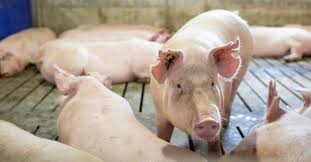Small-scale pig farming is an important agricultural activity that provides income for rural and peri-urban households. Unlike large commercial pig farms, small-scale operations typically involve fewer pigs (ranging from 5 to 50 pigs) and rely on family labor and locally available feed resources.
The profitability of small-scale pig farming by examining key factors such as startup costs, operational expenses, revenue streams, and potential challenges. Understanding these elements helps farmers make informed decisions and optimize their operations for better financial returns.
Table of Contents
1. Key Factors Influencing Profitability
1.1. Initial Investment Costs
Starting a small-scale pig farm requires capital for:
- Housing & Infrastructure – Constructing pig pens with proper ventilation, drainage, and space (cost varies by materials used).
- Purchase of Breeding Stock – Buying high-quality piglets or breeding sows (prices depend on breed and location).
- Equipment & Tools – Feeding troughs, waterers, weighing scales, and cleaning tools.
- Feed & Supplements – Initial stock of feed before first sales.
1.2. Operational Costs
Ongoing expenses include:
- Feed Costs (60-70% of total expenses) – Commercial feeds vs. homemade alternatives (e.g., maize, soybean, kitchen waste).
- Veterinary Care & Medications – Vaccinations, deworming, and treatment of common diseases.
- Labor Costs – Family labor vs. hired workers.
- Utilities & Maintenance – Water, electricity, and repairs.
1.3. Revenue Streams
- Sale of Live Pigs – Weaners, growers, or mature pigs for slaughter.
- Breeding Services – Selling piglets from sows.
- Manure Sales – Pig waste as organic fertilizer.
- Value-Added Products – Processed pork (sausages, bacon) for higher margins.
2. Profitability Analysis (Case Study Example)
2.1. Assumptions for a 10-Pig Farm
- Startup Costs:
- Housing: $500
- 10 Piglets: 1,000(1,000(100 each)
- Equipment: $200
- Initial Feed Stock: $300
- Total Initial Investment: $2,000
- Annual Operating Costs:
- Feed (per pig): 200×10=200×10=2,000
- Veterinary: 20×10=20×10=200
- Miscellaneous: $300
- Total Annual Costs: $2,500
- Revenue Projection:
- Selling 10 pigs at 100kg each: 3/����������ℎ�=3/kgliveweight=3,000
- Manure sales: $100
- Total Annual Revenue: $3,100
- Profit Calculation:
- Gross Profit: 3,100−3,100−2,500 = $600/year
- Return on Investment (ROI): (600/600/2,000) × 100 = 30%
2.2. Break-Even Analysis
- Break-even point: When total revenue equals total costs.
- If each pig sells for $300, the farm must sell at least 8.3 pigs per year to cover costs.
3. Strategies to Improve Profitability
3.1. Cost Reduction Strategies
- Alternative Feeds: Use kitchen waste, crop residues, or forage to cut feed costs.
- Bulk Purchasing: Buy feed and medications in bulk for discounts.
- Preventive Healthcare: Reduce disease outbreaks through vaccinations and biosecurity.
3.2. Revenue Enhancement Strategies
- Value Addition: Process pork into sausages, bacon, or smoked meat for higher profits.
- Direct Marketing: Sell directly to consumers or local butcheries to avoid middlemen.
- Diversification: Integrate pig farming with crop farming (using manure as fertilizer).
3.3. Record Keeping & Financial Management
- Track expenses, sales, and growth rates to identify inefficiencies.
- Use simple accounting tools to monitor cash flow.
4. Challenges in Small-Scale Pig Farming
- Disease Outbreaks (e.g., African Swine Fever) can wipe out entire stocks.
- Feed Price Volatility affects profitability.
- Market Access may be limited without proper networks.
- Regulatory Issues (permits, waste disposal laws) can add costs.
Here are ten frequently asked questions (FAQs) about pigs:
1. Are pigs intelligent?
Yes! Pigs are among the most intelligent animals, often compared to dogs and even primates. They can solve puzzles, learn tricks, and have excellent long-term memory.
2. Do pigs sweat?
No, pigs have very few sweat glands, which is why they roll in mud to cool down. The mud also protects their skin from sunburn and insects.
3. How long do pigs live?
Domestic pigs typically live 12–15 years, but some can reach 20 years with proper care. Wild boars usually live shorter lives due to predators and environmental factors.
4. Are pigs clean animals?
Despite their reputation, pigs are naturally clean animals. They designate separate areas for eating, sleeping, and waste—if given enough space.
5. What do pigs eat?
Pigs are omnivores and eat a varied diet, including vegetables, fruits, grains, and occasionally small animals or insects. Domestic pigs are often fed commercial feed.
6. Why do pigs root (dig with their snouts)?
Rooting is natural behavior for pigs—they do it to search for food, explore their environment, and keep their snouts strong.
7. Can pigs swim?
Surprisingly, yes! Pigs are capable swimmers, and some wild pigs (like the Babirusa) are known to swim between islands.
8. How many piglets can a sow have?
A sow (female pig) can give birth to 8–12 piglets per litter, and some breeds may have even more.
9. Do pigs make good pets?
Miniature pig breeds (like potbellied pigs) can be good pets if given proper care, training, and space. However, they require long-term commitment due to their lifespan.
10. Why are pigs important to humans?
Pigs are a major source of meat (pork, bacon, ham), provide leather and medical products (like insulin), and are used in scientific research due to their biological similarities to humans.

